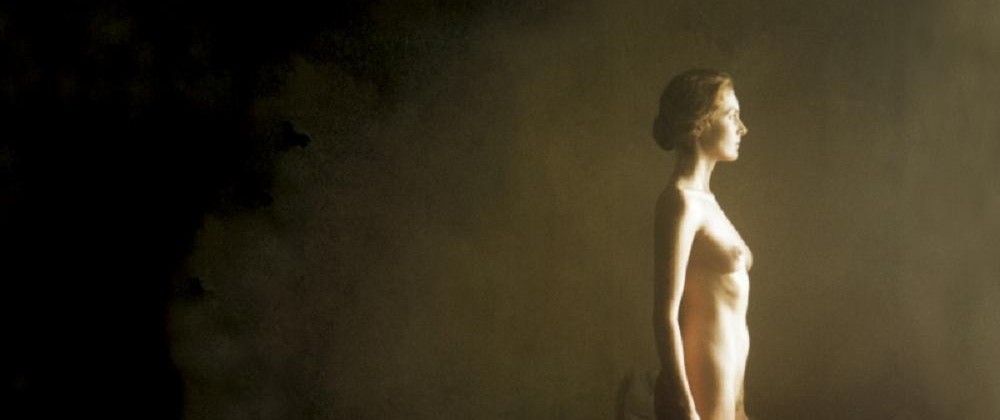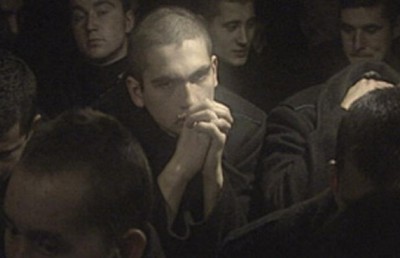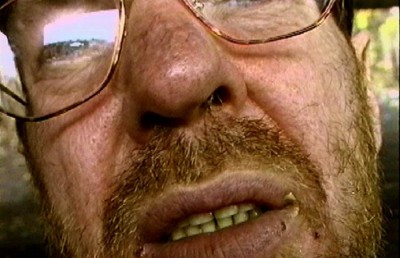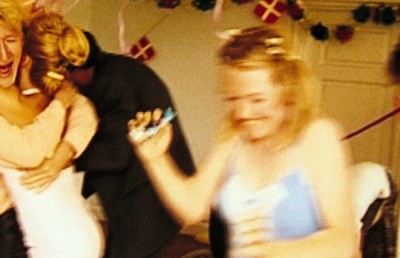Where Opera Weds Painting
Lech Majewski's The Roe's Room

Lech Majewski, writer/director of The Roes’ Room , calls his film an “autobiographical film opera”. A writer and director of opera as well as of film, Majewski composed the music and libretto that provide the text of the film. He is also a painter, a poet, and a producer ( Basquiat , 1995). The Roes’ Room marries opera with painting-like images in an intricate and enthralling homage to the wonder of youth. Majewski uses both the fine arts and the vitality of the natural world to induce a sense of the richness of his life as a child and the miracle of the life of the creative imagination.
A father, mother, and son, live in an old apartment with large bright rooms and an air of stillness. They have their routines-each day the white tablecloth is carefully laid on the table, either the father or the son sets the places while the mother carries in the tureen of soup and serves it. No words are spoken, the characters pass through their days in silence and, in fact, there is rarely contact between the three of them. Normally, they focus on their bowls of soup at supper-time and in one scene, when the television is turned on, all turn to gaze vacantly at that flickering light. The family unit is, in fact, three separate individuals occupying a common space. And what a space! With its high ceilings and muted light from the windows, the rooms make us feel there is no ceiling or roof hovering above it. There is nothing to keep this world from touching the sky.
Then, one day, the mother notices a small vine poking out through a crack in the wall. She tugs gently at it, but rather than the vine giving way, the old plaster crumbles around it. Obviously, there is a force here stronger than the walls that surround and protect the family. The vine grows. Next, a huge tree trunk appears, bursting through the floor and rising up to heights that we are never shown. Each family member has his or her particular response to this mysterious appearance. The son looks down through the hole towards the roots-he sees a woman, naked on a bed. A man joins her, heavily and silently covering her as they copulate. The mother brings out a bucket of sudsy water to wash it. After a tour around the tree, looking up in amazement, past where we can see, the father, too, brings a bucket of soapy water and, in the foreground, washes shirts.
Plants take over the apartment, with the characters walking through tall grasses growing in the rooms, as they would walk through a field. The father takes down the scythe, sharpens it and cuts down the plants. Then, during the night when the family sleeps, the roes materialize. The scene opens on the boy, sleeping peacefully, while two roes gingerly pick their way through this once human habitat. Slowly the father awakens; the camera gently moves around the room where we discover the mother, stroking one of the animals with a smile of almost other-worldly happiness.
These images tell us about the invisible but vibrant life force that filled the filmmaker’s childhood. His world resonates with life, contained within these walls and yet reaching far beyond. The vitality reflects the inner world of his imagination. In one scene, a spot in a wall begins to throb, as if there were a heart behind it, beating against the chest wall. The mother gently touches it, feeling her way around the spot. She lays her hand upon it but the pulsing continues.
The film is structured in four sections the reflect the cycles of nature through the seasons: spring, summer, fall, and winter. Their man-made walls are no protection against the cycles of birth, growth, harvesting, and death in this magical garden. It is spring when the mother discovers the vine creeping through the wall. Through the summer everything grows, and the son discovers love in all its wondrous innocence. After gazing for so long at the girl across the street, she appears in his room one day. They undress and lay together in bed. The father wakes and sees them there. He gets up and walks over to lay his hand protectively on his son’s chest while he sleeps. With the autumn, the father cuts the grasses and the roes appear, wandering through the apartment as they would through their own natural habitat. Winter arrives. The characters dress in their heavy clothes while inside and, in one particularly striking image, the mother opens the refrigerator to have a snowstorm blow out of it. And, as always with winter, there is death.
The singers of the libretto, arranged as in a tableau, appear several times through the film, either with the family so that the three characters move around them, or on their own. Sometimes, this group dances, in bizarre and stiff steps. Certain of these shots offer some of the weakest of the film, not because of their framing or their lighting, but because this group of people have a look of the everyday about them, while the family appear almost surreal or otherworldly.
The camera moves very little. Often, it sits stationary, framing a scene in which the characters move. If it does move, it takes us on extremely slow tracking shots through rooms, crossing paths with the characters who appear oblivious to one another, and past windows through which a breeze gently billows opaque curtains. We move in and out of instances of time, in and out of instants of life. One particular shot is repeated, with slight variance. It frames the face of the son in very tight close-up, with half of his face cut off. We can look directly into his eye which is placed foreground and just off centre while, behind him, other characters move, or we have our gaze directed towards a painting.
Majewski is a painter as well as a filmmaker and I assume, it is his work which we see hung on every wall in the family home. His love of painting is also obvious in both the way he uses the camera and in the way he has lit the film. The scenes resonate with warmth and tenderness because of the muted and indirect lighting. In several scenes, Majewski does use one strong source to light a subject, recalling certain masters of the Baroque style. One painting that appears in several scenes which is in the style of de Chirico’s Mystery and Melancholy of a Street (1914), so we must believe it must have a certain importance for Majewski
There is no dialogue in this film. As mentioned before, the characters rarely look directly at each other and never, ever speak. While the libretto has not been translated, I think it is safe to imagine that the words for the opera provide a sort of voice-over. The music is stunningly beautiful and stops only rarely, for a second or two, to permit a direct sound such as a piece of paper being torn into shreds. The opera is available on a CD from Polygram.
The Roes’ Room is a production for television, supported by the national public network in Poland. It is difficult to imagine such a film showing anywhere on North American television-it simply does not fall into any definable categories. Some will find the pacing difficult to take, and the fact that we can’t understand the words will bother many. The combination of the visuals and the music, however, will be appreciated by almost anyone who appreciates art.













